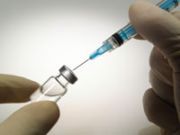Article
Superficial Fat Necrosis: Rare Complication of Insulin Injection
Author(s):
Superficial fat necrosis is a rare complication of insulin injections that can manifest with severe, persistent, and well-localized pain.

The journal Diabetes, Endocrinology & Metabolism included a case study in its September 2014 issue designed to raise awareness of superficial fat necrosis as a rare complication of insulin injections. Fat necrosis can manifest with severe, persistent and well-localized pain, as it did in the case described. Because superficial fat necrosis is rare, healthcare professionals may overlook this diagnosis and patients will suffer needlessly.
Difficulties associated with superficial fat necrosis diagnosis often begin with a low index of suspicion. Most healthcare professionals are aware of erythema, pruritus and indurations as potential complications of daily injections. They also see cases of lipohypertrophy, which are the most common complication in insulin-injecting patients. Some of these problems are associated with poor injection technique or insulin-specific problems.
Patients who develop superficial fat necrosis may have good injection technique and report no problems with their insulin therapy. The pain they describe, while sharp and often aggravated by movement, is otherwise vague.
Researchers believe that fat necrosis develops after physical and chemical insults stimulate an inflammatory reaction within the adipose tissue. Fat necrosis is often encapsulated, which is the body’s attempt to prevent spread of the inflammatory lesion into surrounding tissues.
The best tool to diagnose superficial fat necrosis is MRI. If the MRI shows a lesion, it is usually central fat signal surrounded by a peripheral ring. The next step is appropriate subsequent histopathology that will show ragged fatty tissue fragments. Even small superficial fat necrosis can be extremely painful; in the case described, the lesion was 53 mm.
Superficial fat necrosis requires prompt surgical excision, which usually results in good resolution of pain. The authors recommend avoiding insulin injections into the affected area after surgery.
Superficial fat necroses are rare, and usually associated with trauma. Key points to remember are that they are a possible adverse outcome of insulin injection; they can be very painful; and surgical incision is the treatment of choice. This case report is available free-of-charge.




